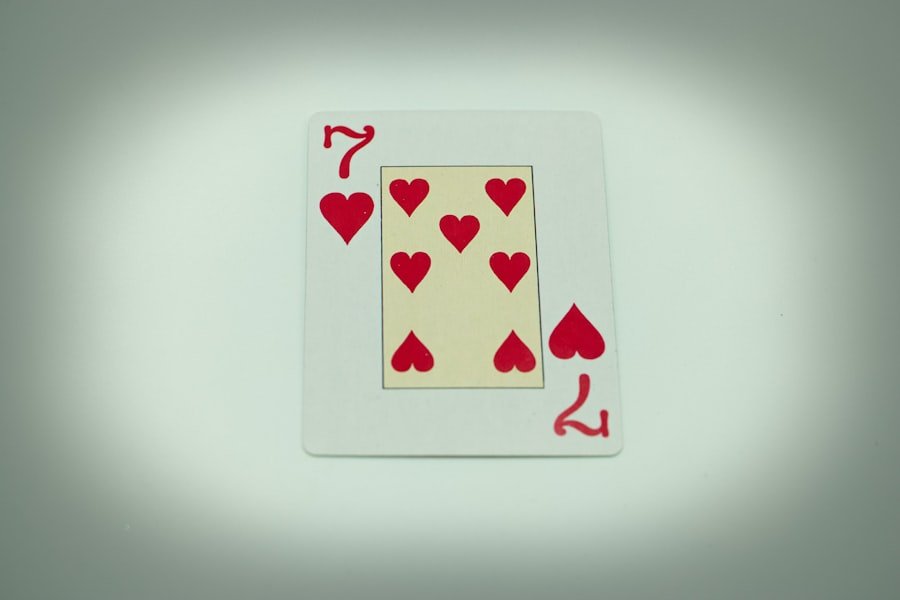Now Reading: The Art of Inaction: Games that Challenge You to Do Nothing
-
01
The Art of Inaction: Games that Challenge You to Do Nothing
The Art of Inaction: Games that Challenge You to Do Nothing

In a world that often glorifies busyness and constant activity, the concept of inaction may seem counterintuitive. Yet, I find myself drawn to the art of doing nothing, especially in the realm of gaming. The allure of games that challenge me to embrace stillness and patience is both refreshing and enlightening.
These games invite me to step back from the frenetic pace of life and engage in a different kind of experience—one that emphasizes contemplation over action. As I delve into this fascinating genre, I discover that inaction is not merely the absence of activity; it is an art form that can lead to profound insights and enjoyment. The beauty of inaction lies in its ability to create space for reflection and mindfulness.
In a society that often equates productivity with worth, I find solace in games that encourage me to pause, observe, and simply be. This article will explore the multifaceted nature of inaction in gaming, examining its appeal, psychological benefits, and the ways it can enhance my overall well-being. By embracing the art of inaction, I can cultivate a more balanced and fulfilling gaming experience.
Key Takeaways
- The art of inaction in gaming encourages players to embrace stillness and patience.
- Inaction games challenge players to be inactive, creating a unique appeal and enjoyment.
- Doing nothing in games can have psychological benefits, improving mental well-being and reducing stress.
- Inaction games can be a tool for relaxation, helping to alleviate stress and anxiety.
- Inaction games teach players the art of patience, fostering the ability to wait and be still.
The Appeal of Doing Nothing: Why We Enjoy Games that Challenge Us to be Inactive
There is something inherently appealing about the idea of doing nothing, especially when it comes to gaming. I often find myself captivated by games that require minimal input, allowing me to immerse myself in a world where the pressure to perform is lifted. These games often present a unique challenge: they invite me to engage with the environment rather than rush through objectives.
The slow pace allows me to appreciate the intricacies of design and storytelling, creating a richer experience than many fast-paced alternatives. Inaction games often evoke a sense of tranquility that is hard to find elsewhere. When I play these games, I am reminded of the simple joys of life—watching clouds drift by, listening to the rustle of leaves, or observing the subtle changes in a virtual landscape.
This appreciation for stillness resonates deeply with me, as it encourages a mindful approach to gaming. Rather than racing against time or competing with others, I can take my time, savoring each moment and allowing myself to be fully present in the experience.
The Psychological Benefits of Inaction: How Doing Nothing Can Improve Mental Well-being

Engaging in inaction can have significant psychological benefits that extend beyond the gaming experience itself. I have found that allowing myself moments of stillness can lead to reduced stress levels and improved mental clarity. In a society that often prioritizes constant movement and achievement, taking time to do nothing can feel revolutionary.
It provides me with an opportunity to recharge my mental batteries and gain perspective on my thoughts and feelings. Research supports the notion that periods of inactivity can enhance creativity and problem-solving skills. When I step away from the hustle and bustle of daily life, I often find that my mind begins to wander freely, leading to new ideas and insights. Inaction allows me to tap into my subconscious, fostering a sense of creativity that might otherwise remain dormant under the weight of constant activity. By embracing these moments of stillness, I can cultivate a more balanced mental state and enhance my overall well-being.
Gaming for Relaxation: How Inaction Games Can Help Reduce Stress and Anxiety
Inaction games serve as a powerful tool for relaxation, providing an escape from the pressures of everyday life. When I immerse myself in these experiences, I often feel a sense of calm wash over me. The gentle pace and lack of urgency create an environment where I can unwind and let go of my worries.
Whether it’s tending to a virtual garden or exploring a serene landscape, these games allow me to disconnect from stressors and focus on the present moment. Moreover, the simplicity of inaction games can be incredibly therapeutic. I appreciate how they often require minimal cognitive load, allowing me to engage without feeling overwhelmed.
This aspect is particularly beneficial during times of high anxiety when my mind races with thoughts and concerns. By engaging with games that prioritize stillness, I can create a sanctuary for myself—a space where I can breathe deeply and find solace amidst chaos.
The Art of Patience: How Inaction Games Teach Us to Wait and Be Still
One of the most valuable lessons I have learned from inaction games is the art of patience. In our fast-paced world, waiting can feel like an inconvenience; however, these games challenge me to embrace it as an essential part of the experience. Whether it’s waiting for crops to grow or observing the gradual changes in a virtual ecosystem, I am reminded that good things often take time.
This lesson extends beyond gaming and into my daily life, encouraging me to cultivate patience in various aspects. As I engage with these games, I find myself developing a deeper appreciation for the process rather than just the outcome. The act of waiting becomes an opportunity for reflection and mindfulness.
Instead of rushing toward a goal, I learn to enjoy the journey itself—an invaluable skill that enhances my overall quality of life. By practicing patience through gaming, I am better equipped to handle real-life situations that require me to slow down and take a breath.
The Challenge of Inaction: Overcoming the Urge to Constantly Move and Act

While embracing inaction can be rewarding, it is not without its challenges. I often grapple with the urge to constantly move and act—a mindset ingrained in our culture. The pressure to be productive can make it difficult for me to fully engage with games that prioritize stillness.
However, recognizing this internal struggle has been an essential part of my journey toward appreciating inaction. To overcome this challenge, I have learned to approach inaction games with an open mind. Instead of viewing them as unproductive or boring, I remind myself that they offer a different kind of engagement—one that values presence over performance.
By consciously setting aside my need for constant activity, I can immerse myself in these experiences more fully. This shift in perspective has allowed me to embrace the beauty of stillness and discover new dimensions within gaming.
The Evolution of Inaction Games: From Traditional Board Games to Modern Video Games
The evolution of inaction games is a fascinating journey that reflects broader changes in society’s relationship with leisure and entertainment. From traditional board games like chess or Go—where strategy unfolds slowly over time—to modern video games that emphasize exploration and observation, the genre has expanded significantly. As I explore this evolution, I am struck by how these games have adapted to meet our changing needs for relaxation and mindfulness.
In recent years, we have seen a surge in indie games that prioritize inaction as a core mechanic. Titles like “Journey” or “Stardew Valley” invite players into immersive worlds where they can engage at their own pace. These modern interpretations build on the foundations laid by traditional games while incorporating innovative design elements that enhance the experience.
As technology continues to advance, I am excited to see how developers will further push the boundaries of inaction gaming.
The Role of Inaction in Game Design: How Developers Create Engaging Experiences with Minimal Activity
Game developers play a crucial role in shaping the experience of inaction within their creations. Through thoughtful design choices, they create environments that encourage exploration and contemplation rather than frantic action. As I delve into this aspect of game design, I appreciate how developers use visual aesthetics, soundscapes, and narrative elements to foster a sense of tranquility.
For instance, many inaction games feature stunning visuals that invite players to pause and take in their surroundings. The use of calming music or ambient sounds further enhances this experience, creating an atmosphere conducive to relaxation. By carefully crafting these elements, developers allow players like me to engage with their creations on a deeper level—transforming gameplay into an artful experience that transcends mere entertainment.
Inaction Games for Mindfulness: Using Stillness to Foster Awareness and Presence
Inaction games have emerged as powerful tools for cultivating mindfulness—a practice that emphasizes being present in the moment without judgment. When I engage with these games, I find myself naturally drawn into a state of awareness where distractions fade away. The act of doing nothing becomes an opportunity for self-reflection and connection with my surroundings.
Mindfulness through gaming encourages me to observe my thoughts and feelings without attachment or urgency. As I navigate virtual worlds at a leisurely pace, I become more attuned to my emotions and reactions—an invaluable skill that extends beyond gaming into my daily life. By incorporating mindfulness practices into my gaming routine, I can foster greater awareness and presence both on-screen and off.
The Future of Inaction Games: How Technology and Innovation are Shaping the Genre
As technology continues to evolve, so too does the potential for innovation within the realm of inaction games. With advancements in virtual reality (VR) and augmented reality (AR), developers have new opportunities to create immersive experiences that prioritize stillness and observation. I am particularly excited about how these technologies can enhance my engagement with virtual environments—allowing me to explore at my own pace while fully immersing myself in captivating worlds.
Moreover, as society increasingly recognizes the importance of mental well-being, there is likely to be a growing demand for games that promote relaxation and mindfulness. This shift could lead developers to experiment with new mechanics that emphasize inaction even further—creating experiences designed specifically for those seeking respite from the chaos of modern life. As someone who values these moments of stillness, I eagerly anticipate what lies ahead for this genre.
Embracing the Art of Inaction in Gaming for a Balanced and Fulfilling Experience
In conclusion, embracing the art of inaction within gaming has enriched my life in countless ways. Through engaging with games that prioritize stillness and patience, I have discovered valuable lessons about mindfulness, creativity, and self-awareness. These experiences remind me that doing nothing can be just as meaningful as constant activity—if not more so.
As I continue my journey through the world of gaming, I am committed to seeking out experiences that celebrate inaction. By doing so, I hope not only to enhance my own well-being but also to inspire others to appreciate the beauty found within moments of stillness. In a fast-paced world that often overlooks the value of doing nothing, I believe there is immense power in embracing this art form—one game at a time.
If you’re looking for a unique gaming experience, you might want to check out an article on how the Game Developers Conference 2025 is driving innovation. However, if you’re interested in a different kind of challenge, you might be intrigued by the idea of games where the real challenge is doing nothing. This concept is explored in an article that delves into the idea of finding enjoyment in the absence of action and excitement in gaming. For more gaming-related content, you can also explore articles on the best gaming deals right now or the ultimate list of the best RPGs of all time.



























